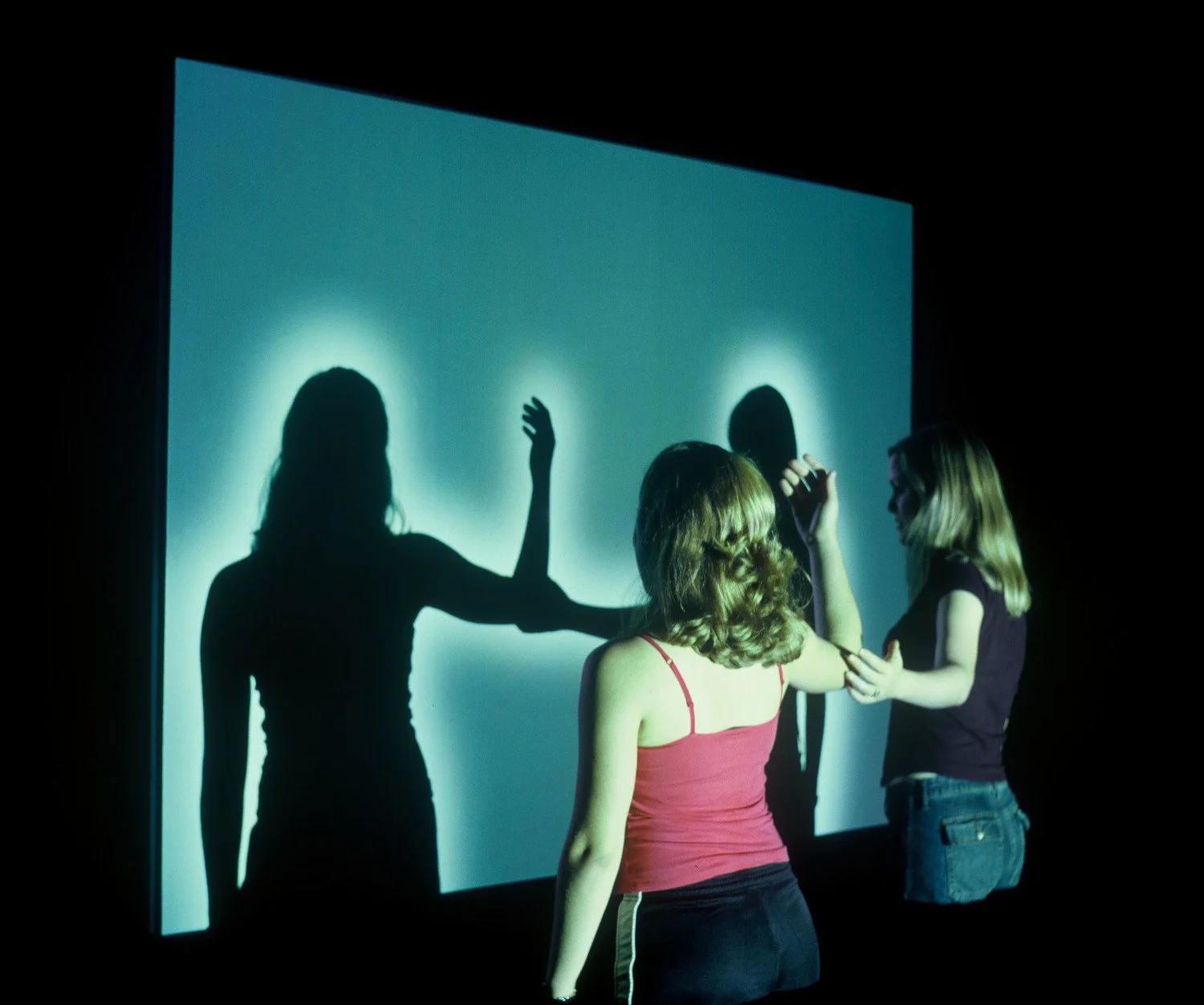CONCENTRATION (2003)
From the Screen Series
Untouched, Concentration is a pristine rectangle of white light. When a first person walks into the field of its projected screen, the screen’s light immediately collapses and brightens around her shadow, and no one else’s. Only when viewers touch does light expands from one person to another, creating a flickering aura, reminiscent of a light bulb with a loose electrical connection. It is possible to transfer the glow from one person to another, but only by reaching deep within a shadow, to the body's core.
EXHIBITION HISTORY
Beall Center for Art & Technology (solo show), Irvine, CA, 2003
Nabi Art Center. Seoul, South Korea, 2004
Tarble Arts Center. Eastern Illinois University. October, 2004
ABOUT THE SCREEN SERIES
Each work in the Screen Series starts with a pure rectangle of white light projected onto a wall. Through computer mediation, the projections react to viewers as soon as they step between screen and projector, putting their bodies and the projection on equal footing, or even making the body dominant to the projected image. In so doing, they allow viewers to create cinema with their bodies, either through reactive projections that respond to viewers, or through porous projections that record viewers' movements.
Though based in the contemporary technologies of computer vision, simulation, and digital projection, these works primarily refer back to the history of cinema and light projection, when silhouettes, rather than exact representations, graced animations, shadow theatre performances, and magic lantern productions. Like these precursors, the Screen Series emphasizes viewers’ shadows, rather than their photographic image. This emphasis on shadows paradoxically creates a stronger integration of viewers' bodies with the projections, since a picture of a viewer’s shadow is almost identical to the shadow itself, while a picture of a viewer’s body is less similar to their actual three-dimensional form. With such an approach, these works have a similar agenda as structuralist film: the removal of layers of cinematic illusion to reveal the nature of the image itself.
The Screen Series refers to the early years of cinema in a another way, remembering a time when cameras functioned as all-in-one photographic, developing, and projection devices. These early cameras first captured images onto film through a lens, then served as developing tanks when chemicals were poured into their bodies. Finally, the camera was emptied, dried, and turned into a projector by placing a light behind the lens. This contemporary combination of camera, projector, and computer echo those early cinema cameras, with computer “processing” replacing chemical processing.
Works in the Screen Series were produced with the support of The Beall Center for Art and Technology, Art Interactive, The San Francisco Media Arts Coalition, and GenArt San Francisco.
photographs by Kyle Knobel, Tavo Olmos and Scott Snibbe






